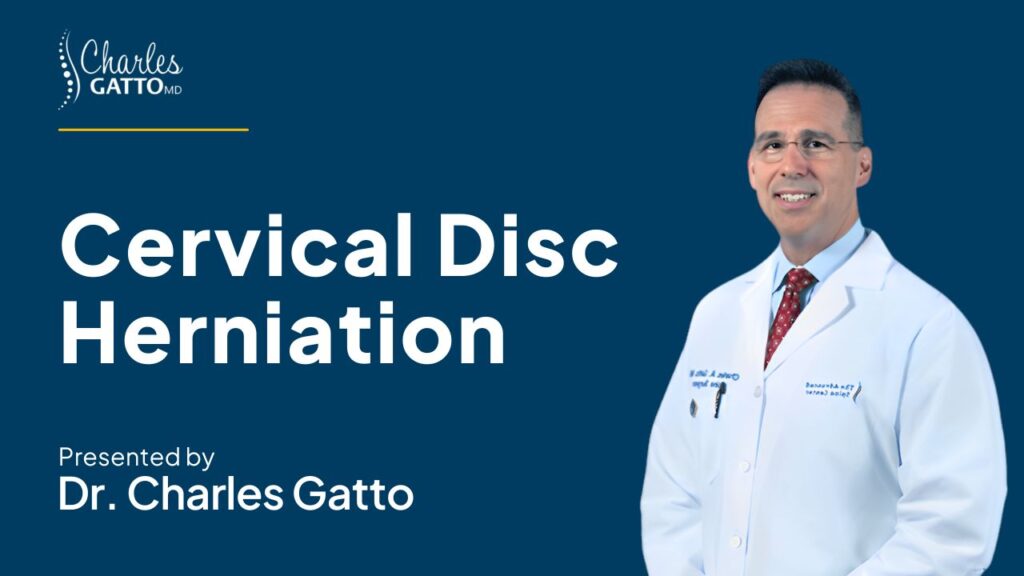Advanced Treatments for Cervical Disc Herniation

A common reason that patients come to see us is because they are dealing with neck pain and arm symptoms. Typically and often, this is due to a disc herniation in the cervical spine. Understanding your condition and the available treatments can significantly impact recovery and quality of life. This guide delves into the various treatments for cervical disc herniation, offering insights into non-operative and surgical options to empower you with knowledge for your health journey.
Understanding Cervical Disc Herniation
Cervical disc herniation occurs when the disc material between the vertebrae in the neck region protrudes or bulges, pressing on adjacent nerves. This pressure can lead to neck pain and arm symptoms, including numbness, tingling, or weakness. The cervical spine’s complex anatomy is designed for flexibility and support, but this also makes it susceptible to injuries and degenerative changes that can lead to herniation.
Non-Operative Treatments
The initial approach to treating cervical disc herniation is typically non-operative, emphasizing pain relief and promoting the body’s natural healing processes. Here’s a look at common non-surgical interventions:
- Medications: Nonsteroidal anti-inflammatory drugs (NSAIDs) can reduce inflammation and pain, while oral steroids may be prescribed for their potent anti-inflammatory effects.
- Physical Therapy: Tailored exercises and modalities can improve neck strength and flexibility, reducing symptoms and promoting recovery.
- Gentle Traction: This can alleviate nerve compression by gently stretching the neck.
- Cervical Epidural Injections: Injecting steroids near the affected nerve can significantly reduce inflammation and pain, providing relief and a window for natural healing.
Surgical Interventions
When non-operative measures are insufficient or if symptoms escalate, surgery might be necessary. Here’s an overview of the surgical options:
- Anterior Cervical Discectomy & Fusion (ACDF): This procedure involves removing the problematic disc and fusing the adjacent vertebrae using a bone graft and hardware to stabilize the spine, which alleviates nerve compression and stabilizes the area.
- Total Disc Replacement: As an alternative to fusion, this procedure involves replacing the diseased disc with an artificial one, allowing for continued motion at the spinal segment and reducing stress on adjacent segments.
- Posterior Cervical Laminoforaminotomy: This is a minimally invasive procedure that involves removing a small portion of the disk material to relieve nerve pressure, maintaining the spine’s natural movement and alignment.
Choosing the Right Procedure
The decision between ACDF, Total Disc Replacement, and Posterior Cervical Laminoforaminotomy depends on various factors, including the extent of disc degeneration, the patient’s overall spinal health, and specific symptoms. ACDF is particularly beneficial for stabilizing the spine and addressing areas with substantial degeneration. In contrast, Total Disc Replacement is the preferred option for maintaining spinal mobility, ideally suited for patients without advanced arthritis. Similarly, Posterior Cervical Laminoforaminotomy is specifically tailored for cases where disc herniation is localized and doesn’t significantly affect the spine’s stability.
Conclusion
Understanding the range of treatments for cervical disc herniation empowers you to make informed decisions about your care. Whether through conservative measures or surgical intervention, the goal is to alleviate pain, restore function, and improve your quality of life. If you’re experiencing neck pain or arm symptoms, consulting with a spine specialist can provide you with tailored advice and a strategic treatment plan.